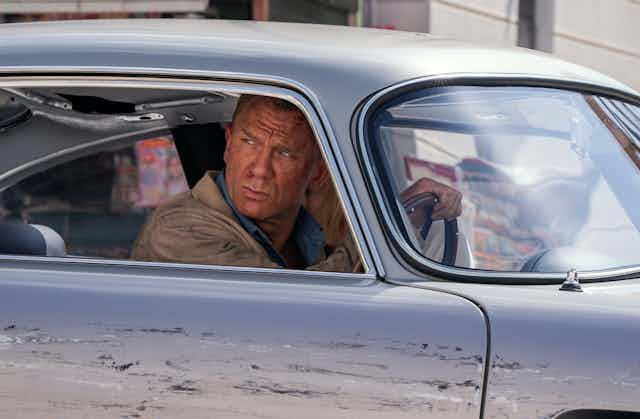Ian Fleming’s most famed character, James Bond, first graced the screen in 1962, ushering in a cinematic obsession that has grossed more than 7 billion dollars since its creation.
Across 26 feature-length films, the James Bond saga has evolved through the ages and met the expectations of audiences. The saga’s latest films, which introduced Daniel Craig in the lead role in 2006, marked a break with the past. The protagonist appears both more robust and more fragile, more in line with the character as sketched out in the original novel, and the tone darkens. Action and espionage remain, while drama supersedes comedy. The films presented a different narrative archetype by following a common thread, each character beginning each film with the stigma (physical and psychological) of the previous one.
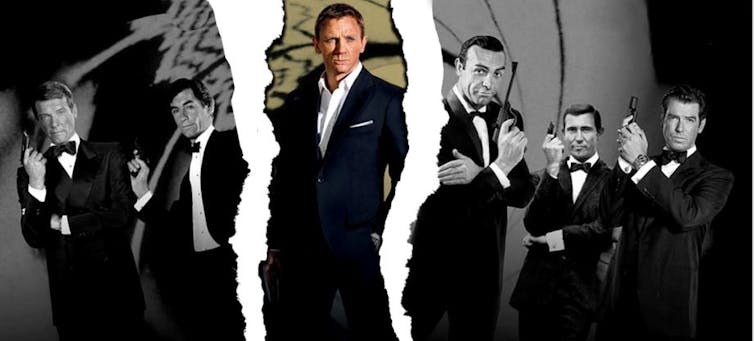
But there is another, less discussed success that has been delighting the particular crowd of ad agencies: that of product placement. As Aston Martin’s DB5 turns 60 this year and we get ready to enjoy a 007 flick or two during the festive period, I take a look at how the Aston Martin brand has become essential to the series.
Bond-Craig earns his stripes
For the first time in 1964’s Goldfinger (Hamilton), James Bond drives an Aston Martin – model DB5 – like his literary alter ego (Goldfinger, Ian Fleming, 1959). The DB5 appeared in eight Bond films – Goldfinger, Thunderball (Young, 1965), Golden Eye (Campbell, 1995), Tomorrow Never Dies (Spottiswoode, 1997), Casino Royale, Skyfall, Spectre and No Time to Die – and was driven by Sean Connery, Pierce Brosnan and Daniel Craig.
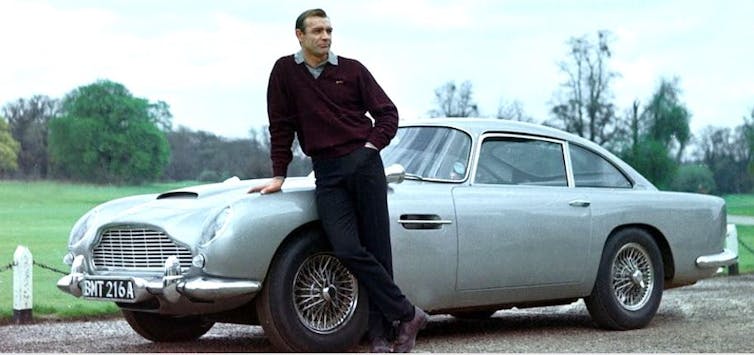
In the prologue to Casino Royale, the British agent enters a room reserved for casino staff – the remote surveillance area. Bond scans the hotel’s cameras for the face of his enemy, who gets out of an Aston Martin DB5. This rookie, James Bond, catches a glimpse of the car via an interposed screen.
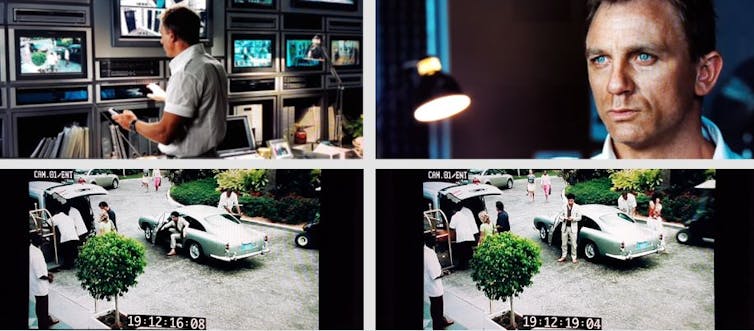
By placing the character in the same situation as the cinema-goer, the director distances Daniel Craig from the character of James Bond. It’s a clever mise en abyme to show that the actor is not yet “in the game”. Nevertheless, the agent identifies the vehicle, a “magnificent 1964 Aston Martin”, which belongs to Dimitrios, a terrorist linked to the Cipher. Later, Bond is playing poker with his enemy. Dimitrios has three kings in his hand. To keep up, he bets his Aston Martin DB5. James Bond calls and wins the game with three aces. On leaving the Casino, Bond climbs into his new car – Bond-Craig has taken possession of his Aston Martin.
In this scene, the Aston Martin is not part of the kit provided by MI6. James Bond has to fight to win the right to be behind the wheel of his character’s mythical car. It’s a strategic battle: when Daniel Craig was unveiled as the next actor to wear the Bond suit, the media focused on his physique, which is far more athletic than his predecessors. We might have expected a muscular action scene, but Martin Campbell conceives instead a scene of psychological tension. It was a poker move for the production: imposing an actor very different from Bond standards and imagination, but also for the new hero who gradually becomes the character.
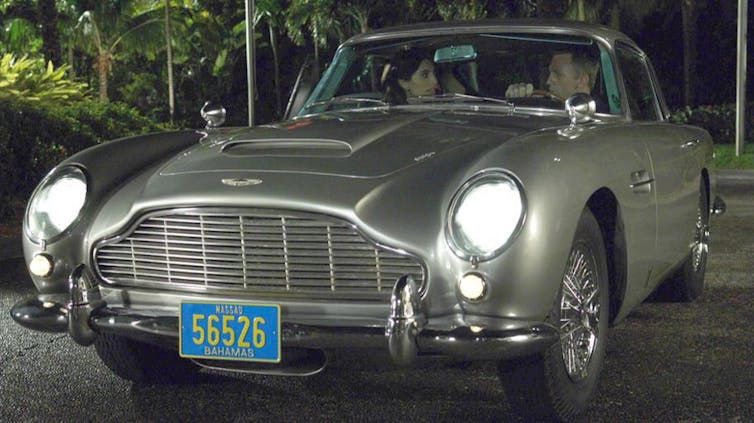
The prologue scene reveals how the protagonist becomes a Double-0. In the viewer’s mind, he is not yet established as James Bond. And by getting behind the wheel of the Aston Martin DB5, Daniel Craig takes a symbolic step toward his character. This product placement can be described as narrative, because it is in itself a major dramatic node and launches the plot. It can also be described as qualifying, as the Aston Martin inserted represents a primordial and fundamental attribute in the construction of James Bond’s identity and his coded universe.
Aston Martin breaks records
As proof, having won the confidence of “M”, later in the mission MI6 entrusted him with a new car: a latest-generation Aston Martin DBS. The new model is unveiled in the film. And if the new face of Bond has to convince by outdoing himself in his role (and in the economic revenues it should generate), his car seems to be in symbiosis, because it too breaks records: the Aston Martin DBS rolls over seven times at 120 km/h, the world record for the greatest number of rolls (according to the Guinness Book). The car was crushed, but managed to protect the agent, who emerged from this impressive stunt unscathed.
Like the armour of a modern-day knight, the car is inseparable from 007. The DBS also features in the opening sequence of Quantum of Solace. Bond-Craig begins his revenge at the wheel of this powerful model in a chase that showcases the car’s performance. The agent has bonded forever with Aston Martin and continues his association, not to say partnership, in subsequent opuses.
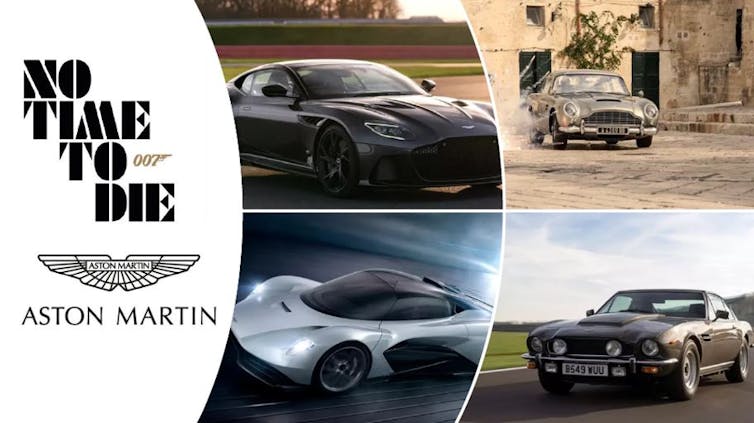
No Time to Die features four Aston Martin models: the DB5, the Aston Martin V8 (similar to the one in the 1987 film The Living Daylights), the DBS Supperleggera (driven by the new female agent 00 Nomi) and the mid-engined Valhalla.
From rupture to return to tradition
Although Bond-Craig drives an Aston Martin, the staging of the product breaks with that of the previous films: the car is just a car, and for once it is not accompanied by innovative gadgets. It wasn’t until Skyfall that the head of MI6’s “Q” section, who supplied 007 with his famous gadgets, returned. Skyfall, the 50th anniversary of the franchise, sounds like a tribute to the saga: the film echoes the past while wiping the slate clean.
Nevertheless, it and the films that followed retained what had been achieved over the previous six years: a serious spirit and a dark tone, without denying the saga’s heritage. The film marks the return of some of the traditional elements – such as gimmicky product placements – that had disappeared from previous films starring Craig.
In the film, “Q” warns Bond – and the audience: “Perhaps you were expecting an explosive pen? They don’t make gadgets like that much these days…” However, the Aston Martin featured in Skyfall reveals its assets once more. Like the original in Goldfinger, it is equipped with two machine guns in the front bumper, tyre-piercing screws in the rear axles, an ejector seat for hostile passengers, a bullet-proof plate that rises up behind the rear window and a device that disperses slippery oil to lose a pursuing car. If the pen no longer explodes, the car (re)becomes a weapon like in the early days of James Bond.
In the final part of the film, Silva’s men blow up the legendary car, provoking 007’s almost irrational anger. To destroy his Aston Martin is to touch him to the core.
In the next film, Spectre, the DB5 is just a carcass before being refurbished in the workshop of “Q”. At the end of the story, Bond chooses to leave MI6 rather than Madeleine. Before bidding farewell with his new love on his arm, he picks up his 1964 Aston Martin, the “last thing” he needs. And the story between Aston Martin and 007 isn’t over, as Bond-Craig and his famous steed will be back again in No Time to Die.
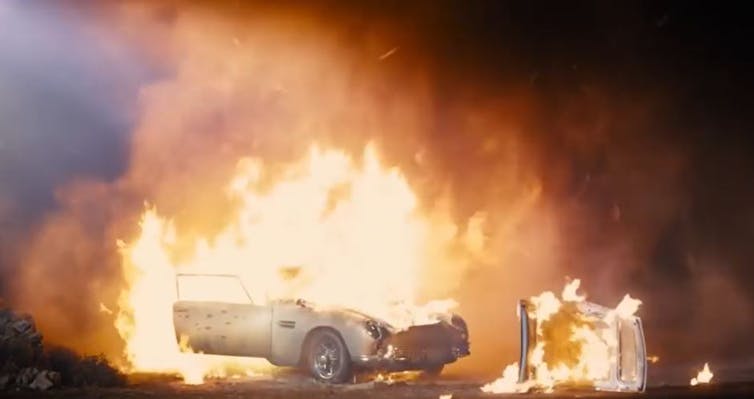
The performative effect of product placement
The release of No Time to Die coincided with Aston Martin’s decision to resume production of the DB5 after more than 50 years. Twenty-five units were manufactured and each sold for 3 million euros. This is no ordinary DB5, but the DB5 of James Bond. Created in partnership with the films’ producers, EON Productions, the car is called the “DB5 Goldfinger Continuation” and features some of the gadgets used in the films: the smoke generator, rotating number plate holders, retractable bumpers and the telephone in the driver’s door.
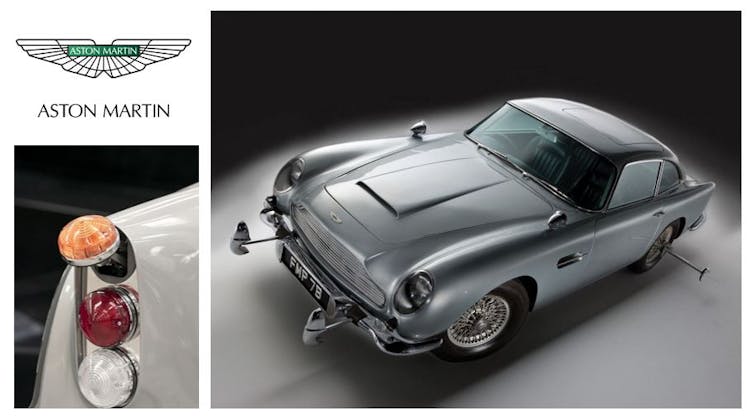
Aston Martin has built up a storytelling operation over several years by placing itself at the heart of the film saga. The brand blurs the boundaries between fiction and reality, between the identity of the actor and that of the character (as in the “Daniel Craig VS James Bond” commercial, produced by Heineken (United States, 2020), and between the fictional car and the one sold in dealerships.
The “DB5 Goldfinger Continuation” gives consumers the illusion of being a super agent or, failing that, a consumer-actor. The 007 films need the brand to immortalise the character. The brand needs the films to perpetuate its prestige and the fascination it inspires. James Bond and Aston Martin, or how product placement shapes an unbreakable alliance.

